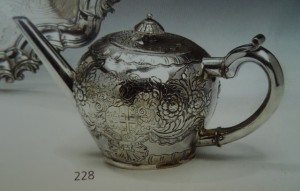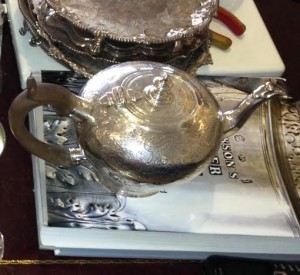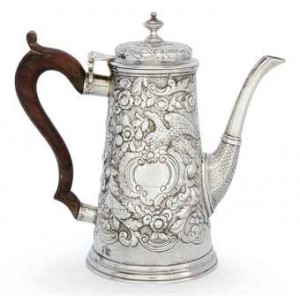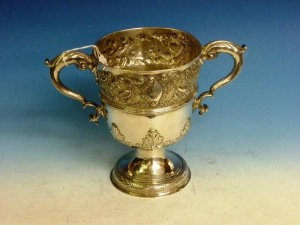Buyers of more valuable pieces of Irish silver ought to be aware of a trick used by light fingered scammers. It revolves around the perfectly legal practice of de-chasing. In Victorian times repousse (embossed) decoration was fashionable. The Victorians chased older pieces – such as a plain, classical Queen Anne piece, in pursuit of fashion. Why? Because it was cheaper to decorate an existing piece than get a new one made. Consequently the integrity of the piece was devalued.
The very small supply of Irish silver creates a constant hunt by international dealers to find later chased pieces and dechase them. This practice adds huge value of perhaps up to ten times the original cost. International standards dictate that when a piece is dechased it has to be labelled as such. These pieces are not permitted to be offered for sale at top international antique fairs. Sadly this practice has not been enforced in Ireland. Buyers of significant plain pre 1750 Irish pieces do need to be aware that collectibles like bullet shaped teapots, bowls, beer jugs and coffee pots may have been dechased and not labelled as such.
It is profitable for the unscrupulous to do this when silver work is early and has good hallmarks. Dechasing can degenerate into downright deception when crests, weights and shapes are changed. It is illegal to add a new piece of silver such as a spout without having the new addition hallmarked. One Irish silver dealer, outraged at the practice, said that anyone with any doubts about a piece should have it vetted by the English plate committee as they possess the experience and knowledge to detect alterations. The vast majority of dechasing is carried out by British silversmiths.
Sadly in the world of antiques, art and collectibles anything valuable will have been forged, imitated and copied. The difference between restoration and re-construction is blurred and causes problems in in many fields. The old adage “caveat emptor” – buyer beware – always applies. Examples of the sort of silver which might be dechased are illustrated.







